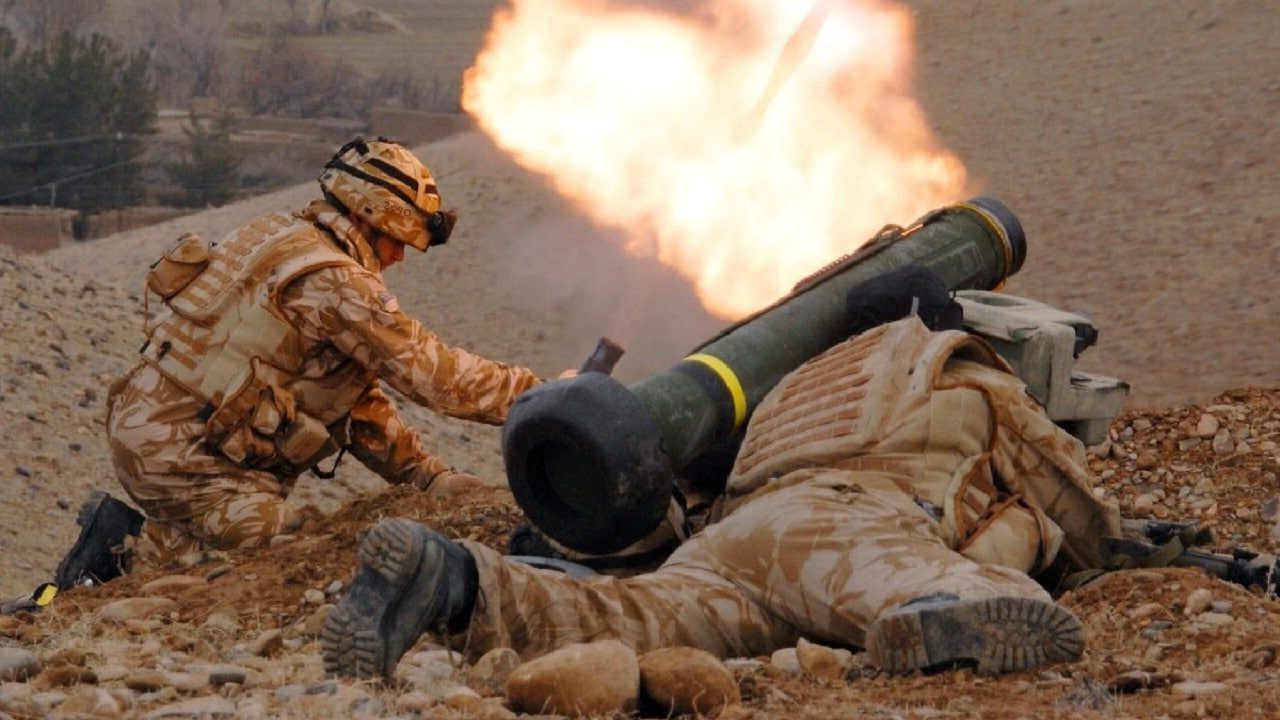Russia’s main battle tanks have not fared well against Ukraine. Some experts believe that nearly half of Moscow’s armored vehicle arsenal has been destroyed or captured by Ukrainian forces. While a variety of weapons and munitions have been used to destroy these tanks, one stands out for its success. The FGM-148 Javelin Advanced Anti-tank Weapons System-Medium (AAWS-M) is a lightweight, man-portable missile system designed to destroy enemy armor. It has seen great success in the Russo-Ukrainian War after substantial service in Iraq and Afghanistan.
The Javelin’s History in Brief
The U.S. Army commissioned the AAWS-M in the mid 1980s, and by the early ‘90s, the Javelin began testing and production. While hiccups during testing led the Government Accountability Office to call for a pause on multi-year procurements, infantry units began deploying with the missile system in 1996.
The Javelin is a two-part missile system consisting of a command launch unit (CLU) and a launch tube assembly (LTA). The CLU is a combination viewfinder, targeting system, and launch authority. The LTA is a tube that contains the missile itself. A simple mechanical hook-up allows it to quickly and easily attach to the CLU.
How It Is Used
Operators use one of three main views on the CLU to find and fix targets. The first is a 4x magnification optical lens with no other filters for daylight operation and operations at dusk and dawn, when rapidly changing temperatures render thermal imaging ineffective. The second is a 4x magnification thermal view that allows the operator to much more easily distinguish troops and vehicles. Following this, there is a 12x thermal sight with a narrow field of view used for final target identification. Once the target is positively identified, the operator presses one of two triggers that cycles to the final seeker view, a 9x magnification thermal view that the CLU uses to determine a firing solution.
In the seeker view, the CLU passes targeting data through the LTA and into the missile’s guidance system. When the operator presses the second trigger to initiate the launch sequence, the missile ejects from the tube via a soft launch — a rocket motor that cuts out before the missile leaves the tube. This means a large clear area is not needed behind the launch tube to protect from back blast. Once the missile determines it is a safe distance away from the operator, the main rocket motor ignites and sends the missile toward the target.
Javelins in Ukraine
While the Javelin is perhaps the most sophisticated anti-tank system delivered to Ukraine since the onset of the invasion, they are of limited quantity. Other NATO member-states have delivered alternative systems to Kyiv.
Videos and other reports have showcased just how capable the Javelin is at destroying Russian tanks. However, an initial lack of tech support and information partially handicapped the anti-tank weapons’ Ukrainian operators when they were first delivered. Without instruction manuals, some troops struggled to assemble the weapons, which obviously is not ideal. Regardless, the delivery of these formidable weapons has certainly aided Kyiv’s defensive efforts over the last year and a half.
Maya Carlin, a Senior Editor for 19FortyFive, is an analyst with the Center for Security Policy and a former Anna Sobol Levy Fellow at IDC Herzliya in Israel. She has by-lines in many publications, including The National Interest, Jerusalem Post, and Times of Israel. You can follow her on Twitter: @MayaCarlin.
From 19FortyFive
A Russian Submarine Accidently ‘Destroyed Itself’
Total Massacre’: Ukraine Footage Shows Russian Cruise Missile Shipment Attacked

